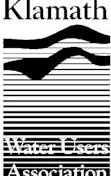
Klamath Water Users Association
Fact Sheet
|
|
Klamath Water Users Association
Fact Sheet
|
|
of Trinity River Water Temperatures
Tribal biologists and the CDFG fish die-off report do not disclose or discuss the important biological relevance of this fact. Instead they chose to focus only on Iron Gate Dam releases. At the direction of KWUA, Dave Vogel, a fisheries biologist with 28 years of experience, examined and compared the maximum water temperatures during September 2002 immediately below Iron Gate Dam on the Klamath River, on the Trinity River below Lewiston Dam, and in the area of the fish die-off. Key aspects of Vogelís findings include:
Water temperatures downstream of Iron Gate Dam were as warm or warmer than the area of the fish die-off during most of September. At the same time, water temperatures in the upper Trinity River were much cooler and within the suitable, if not optimal, range for salmon. |
|
Klamath Water Users
Association |
Content and Logo: Copyright © Klamath
Water Users Association, 2002 All Rights
Reserved
Page design: Copyright ©
klamathbasincrisis.org, 2002, All Rights
Reserved